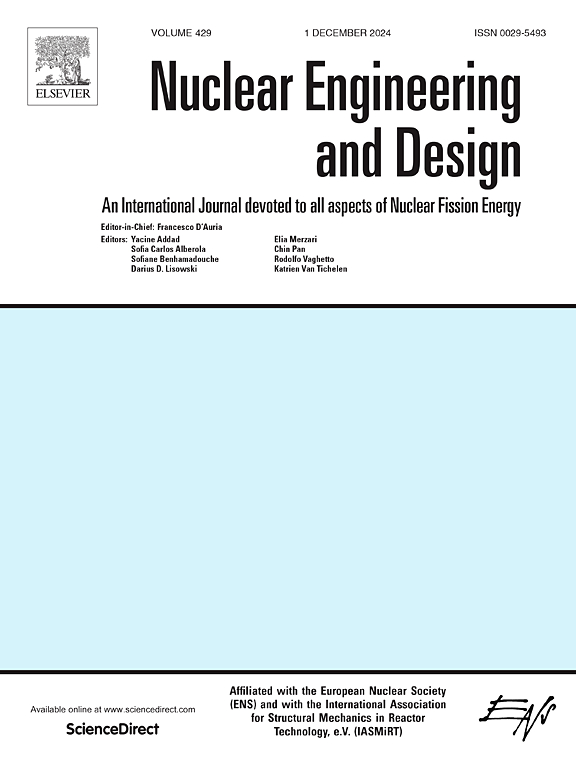The public radiological risk assessment for a generic HPR1000 in China
IF 1.9
3区 工程技术
Q1 NUCLEAR SCIENCE & TECHNOLOGY
引用次数: 0
Abstract
The public radiological risk assessment after severe accidents is considered a reasonable and comprehensive metric to determine the safety of a nuclear power plant, and it has attracted increasing attention since the Fukushima accident. Based on a generic HPR1000 in China, utilizing the source terms of Level-2 PSA and the site hourly meteorological data, individual doses and risks were simulated using a self-developed Level-3 PSA platform. The risk values were compared with the acceptability criteria of US NRC, UK and AR3.1.3. The results show that for both the most frequent and the most severe accident sequences, using the 90th percentile meteorological conditions, the doses are all below the dose limits specified in the Chinese national standard within a 5 km radius from the release point. For each release category, the exceedance frequency corresponding to the 7-day effective dose limit of 50 mSv within 3 km from the site is less than 30 %. The risk of each release category at the site boundary across the average meteorological conditions, and the annual average risks corresponding to the entire accident spectrum at different distances are all less than 10−8/reactor year, demonstrating good compliance with international risk acceptance criteria.
求助全文
约1分钟内获得全文
求助全文
来源期刊

Nuclear Engineering and Design
工程技术-核科学技术
CiteScore
3.40
自引率
11.80%
发文量
377
审稿时长
5 months
期刊介绍:
Nuclear Engineering and Design covers the wide range of disciplines involved in the engineering, design, safety and construction of nuclear fission reactors. The Editors welcome papers both on applied and innovative aspects and developments in nuclear science and technology.
Fundamentals of Reactor Design include:
• Thermal-Hydraulics and Core Physics
• Safety Analysis, Risk Assessment (PSA)
• Structural and Mechanical Engineering
• Materials Science
• Fuel Behavior and Design
• Structural Plant Design
• Engineering of Reactor Components
• Experiments
Aspects beyond fundamentals of Reactor Design covered:
• Accident Mitigation Measures
• Reactor Control Systems
• Licensing Issues
• Safeguard Engineering
• Economy of Plants
• Reprocessing / Waste Disposal
• Applications of Nuclear Energy
• Maintenance
• Decommissioning
Papers on new reactor ideas and developments (Generation IV reactors) such as inherently safe modular HTRs, High Performance LWRs/HWRs and LMFBs/GFR will be considered; Actinide Burners, Accelerator Driven Systems, Energy Amplifiers and other special designs of power and research reactors and their applications are also encouraged.
 求助内容:
求助内容: 应助结果提醒方式:
应助结果提醒方式:


